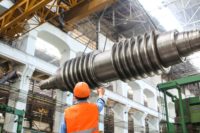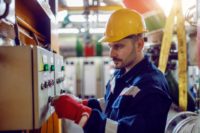Sustainability is about more than feel-good initiatives and commitments to reducing greenhouse gas emissions — it keeps us safe and proactively prevents disasters from occurring in the first place.
In many ways, sustainability is a safety professional's best friend. Sustainable practices are almost always inherently safer than unsustainable ones, and approaching your day-to-day operations from the perspective of sustainability will likely help you create a safer workplace.
Even the Occupational Safety and Health Administration (OSHA) has a strong stance on sustainability, yet some remain unconvinced — and that’s okay. So, here’s a breakdown of the reasons why safety and sustainability are closely linked.
Natural disasters
Evidence overwhelmingly supports the thesis that humans are warming the planet at an unsustainable rate. Carbon dioxide levels have skyrocketed since the industrial revolution, and the earth’s temperature has risen by 2.12 degrees Fahrenheit since the late 19th century.
Our increased use of greenhouse gasses has put us on a collision course with natural disasters that occur more frequently and with greater intensity. Here are a few examples that will likely affect workers in the USA the most.
Fires
Wildfires have always occurred in large wooded areas, and, usually, they’re a good thing. Wildfires can rejuvenate forest floors and potentially improve biodiversity in a given area. However, we’re rapidly approaching a future where wildfires occur too frequently and occur too close to homes and workplaces.
This is happening because climate change alters the careful woodland balance of moisture, temperature, and wood density. As a result, more intense fires are building in areas where fires have not typically been a concern. This has led wildfire fire scientists to declare that we have entered a “new era of wildfire” where previous rules about fire seasons no longer apply.
As a safety professional, you must stay up to date with the latest data on fire prevention to reduce the risk of causing a wildfire. You can do this by assessing your building’s onsite materials and by making a “fire flow calculator” which predicts the spread of fires and helps you move quickly in case of an emergency.
Floods and droughts
We’ve all become familiar with the sight of flash floods tearing through cities and towns. In some cases, these floods can be accounted for and have been effectively managed. However, a significant increase in precipitation across the US means that more communities across the nation will experience flash floods.
While rainfall is expected to be more intense, some areas of the US will actually receive less total precipitation over a year — particularly in the South West. This will lead to further regulations around water usage, and will likely give safety management professionals a headache as water is essential in many safety operations.
Hurricanes and tornadoes
Several communities have been decimated by hurricanes and tornadoes in the past decade. Unfortunately, these intense weather events are becoming more frequent and more intense — models working on predictive analysis show that rising ocean temperature coincided with more frequent and intense hurricane activity.
Hurricanes are devastating to the communities they touch, and little can be done to prevent their impact on your workplace. This results in a hefty bill, as the National Oceanic and Atmospheric Association put at an average cost of $21 billion per storm.
As a safety professional, the best thing you can do to reduce the impact of hurricanes and tornadoes is to prioritize the safety of workers at all times, and have a clear shelter-in-place plan if your community is caught unaware by a tornado or hurricane.
Hazardous materials
Many of the materials and chemicals we use at work are harmful to humans and the environment. In some cases, using these hazardous materials is essential — in others, a sustainable and safe alternative can be found.
The process of cleaning up hazardous chemicals is called “Environmental Remediation”. Environmental remediation is a multi-step process that typically requires that organizations bring in experts who understand Environmental Protection Agency (EPA) laws and regulations. These experts will assess everything from current remediation methods to the local site where a business operates, and advise businesses to make appropriate changes.
As a safety professional, you can get involved in environmental remediation by organizing community clean-ups, seeking alternatives for cleaning chemicals, and advocating for the use of eco-friendly materials in place of hazardous ones. These steps won’t just help the environment: the clean-ups will make for a safer workplace, as eco-friendly materials are almost always less dangerous for humans, too.
Conclusion
There is a strong link between safety and sustainability. Many safety professionals are already having to adapt their approach by accounting for natural disasters and climate events. While safety professionals alone can’t change the course of climate change, they can still play a crucial role in protecting workers, communities, and the environment. So, the next time you’re reviewing workplace safety, be sure to consider sustainability.






